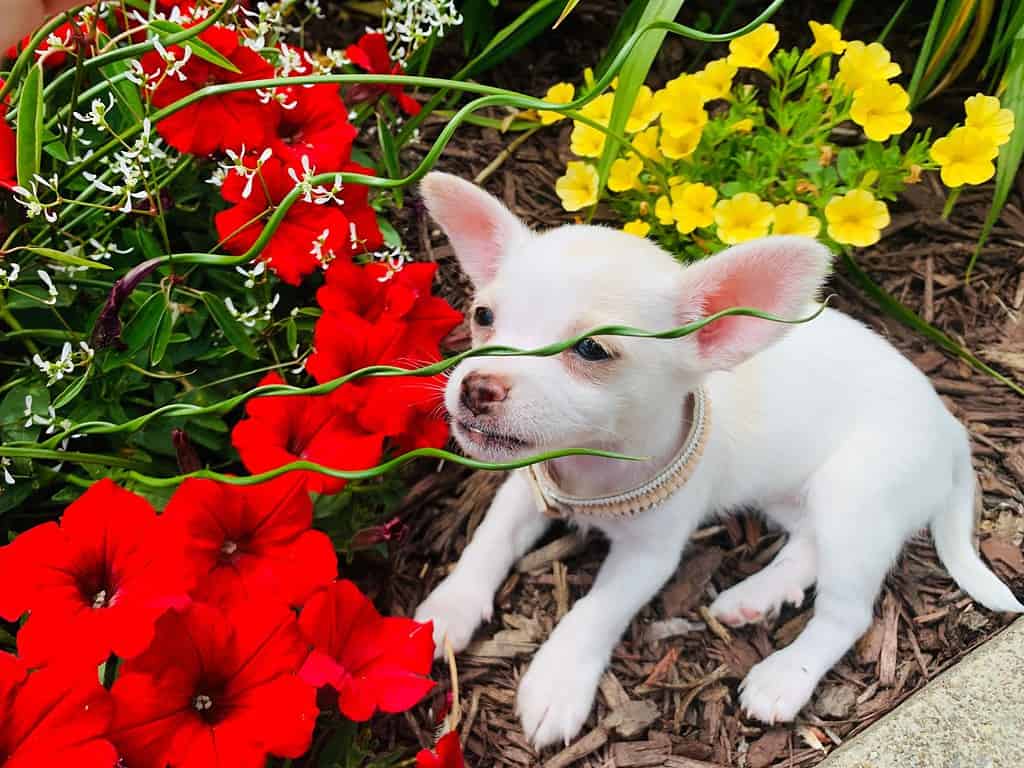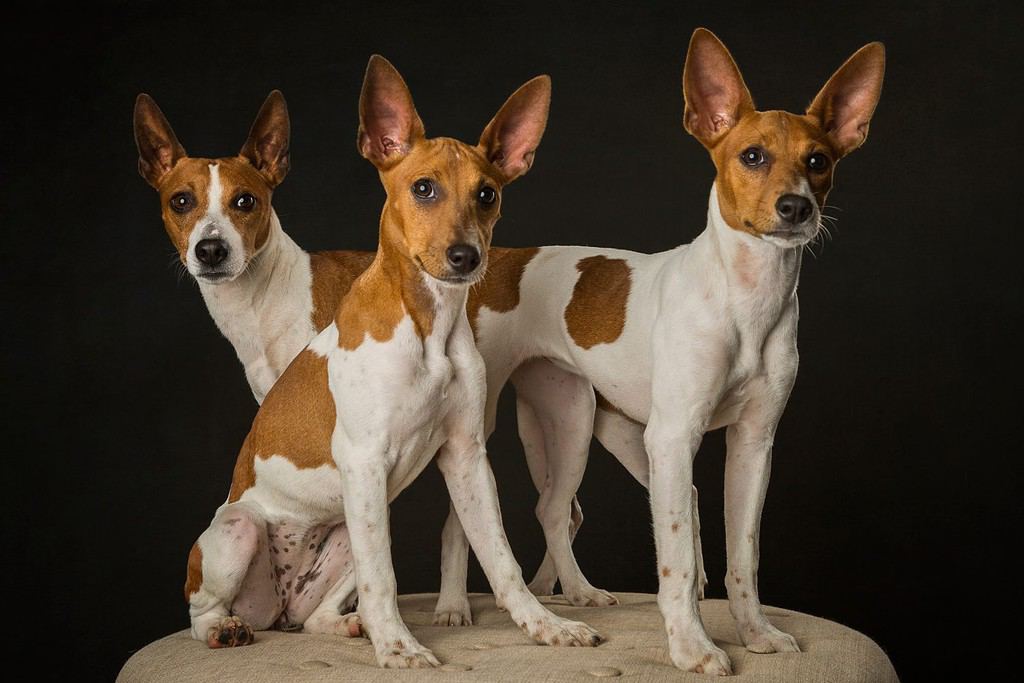These lovable, yet feisty dogs are in movies and homes around the world. Rat terriers, as their name suggests, were originally bred to hunt rats. These dogs are the descendants of those brought with English immigrants and are likely the result of mixing various dogs including Manchester terriers, smooth fox terriers, and the now-extinct English terrier.
They are hard-working, sometimes stubborn dogs that need humans who can understand their idiosyncrasies to help them reach their potential. Personality aside, they are also some of the cutest terriers out there and come in a rainbow of colors.
According to the UKC, “The Rat Terrier may be solid white, bi-color or tri-color but must always have some white.” Some are even speckled in their white areas. When this happens, it’s called ticking. As long as ticking doesn’t overpower the white, it’s not a fault in the breed standard. Without further ado, let’s explore some of the rat terriers’ colors!
Bi-Colored Rat Terriers

Rat terriers have several possible patterns and colors, including these two bi-colored dogs.
©Catchlight Images by Dia/Shutterstock.com
Like many breeds that vary widely in appearance, if you look at a group of rat terriers, you can tell they’re all rat terriers. But their colors and patterns are as unique as a fingerprint — much like a tiger’s stripes! After white, black is the most common rat terrier color, while some breeding lines are more likely to produce lighter colors like tan, lemon, and apricot, you’re more likely to see bi-color or tri-colored terriers with black, white, and some occasional tan points.
Solid White Rat Terrier

They can even be solid white, like this rat terrier-chihuahua mix.
©Heaven Starr/Shutterstock.com
The only solid color allowed in the breed standard is white. Any other one-colored rat terrier is a disqualification and can’t be shown in conformation. In fairness, the lemon-colored pups are born white and develop their color as they grow. So, you can’t always tell what color they’ll be right after pups are born.
Bi-Color Rat Terrier

These dogs only have two colors, white and one other color.
©Nick Chase 68/Shutterstock.com
A bi-colored rat terrier has two colors in its coat. One will always be white, but the other varies and may be any one of the accepted standard colors. Anything from blue, black, red, tan, chocolate or blue can show up in a rat terrier.
Black Tri-Color Rat Terrier

Rat terriers can also have three colors, called tri-color.
©iStock.com/sjallenphotography
Tri-colored rat terriers are common, like this white, black, and tan rat terrier. AKC registries list the colors in order from most to least, so you’ll see one dog listed as white, black, and tan in the registry alongside a dog listed as black, white, and tan. The colors are the same, but it’s a way to give more information and let people know approximately how much each color is in comparison with the others.
Red Rat Terrier Markings

These red and white rat terriers make an adorable set.
©Angel LeBlanc/Shutterstock.com
The breed standard prefers rat terriers with solid, clearly delineated markings like these tan and white rat terriers. However, they allow some ticking, another word for random spots — as long as the base color is still predominately white. Red and tan are often confused for one another because they do look similar, but a DNA test can confirm which genetic combo you’ve scored.
Chocolate Rat Terrier Markings

Chocolate brown is a rich color that looks amazing next to white.
©Dlpwagner/Shutterstock.com
This chocolate and white rat terrier has a blanket pattern, where the dark color looks like your adorable little pooch is wearing a blanket. Blanket patterns occur in all colors except white, for obvious reasons!
Chocolate Tri-Color Rat Terrier

Sometimes chocolate and white become a tri-color with tan.
©Lisa Turay/Shutterstock.com
A recessive color, chocolate often gets overpowered by the more dominant black. But when it shows up, like in this tri-color, it’s adorable.
Apricot Rat Terrier

Apricot rat terriers have a brown nose that the chocolate gene carries.
©MICKEY MAGGARD ARLOW/Shutterstock.com
Lemon and apricot rat terriers look similar and because of that, the terms are often used interchangeably. But rat terriers with apricot markings have more vivid colors than lemon, and lemon pups are born white, and then develop the color whereas apricot pups are born with color.
Rat Terrier with Tan Markings

This rat terrier is nearly all white with only a few tan markings.
©Sarah McGraw/Shutterstock.com
Tan runs the gamut from pale to almost mahogany, but the only way to be 100-percent certain whether it’s tan or red is with a DNA test. Experienced breeders know what might appear in their lines, but there’s always the possibility of a surprise! Whichever color you prefer, you’ll have a bouncy, enthusiastic partner for nearly any activity.
Calico Rat Terrier

The black tri-color’s tan points are clear and clean-edged, while the calico on the right has brown that blends into the black.
©Angel LeBlanc/Shutterstock.com
Sometimes, rat terriers have brown that isn’t clearly delineated from the other markings. It’s called creeping brown or calico and is yet another way their color genes can combine into interesting and beautiful patterns.
The photo featured at the top of this post is © iStock.com/sjallenphotography
Thank you for reading! Have some feedback for us? Contact the AZ Animals editorial team.






